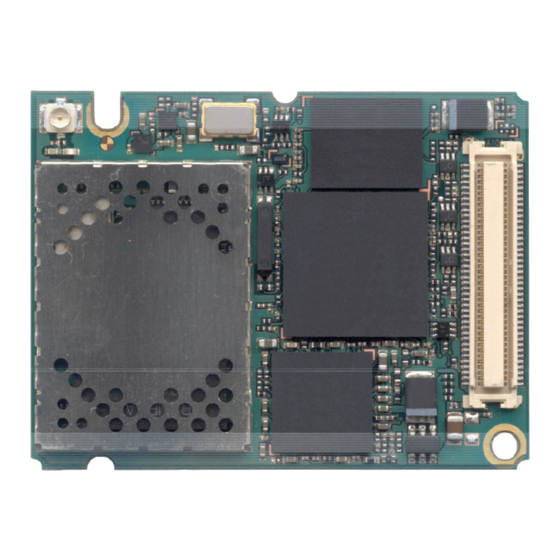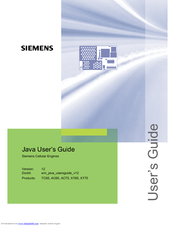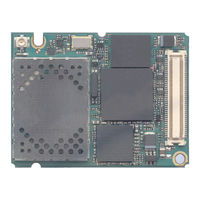
Siemens TC65 Coffee Maker Manuals
Manuals and User Guides for Siemens TC65 Coffee Maker. We have 5 Siemens TC65 Coffee Maker manuals available for free PDF download: User Manual, Hardware Interface Description, Operating Instructions Manual
Siemens TC65 User Manual (123 pages)
Siemens Cell Phone Accessories User Manual
Brand: Siemens
|
Category: Cell Phone Accessories
|
Size: 6.35 MB
Table of Contents
-
1 Preface
11 -
2 Overview
12 -
-
Upgrades27
-
-
Interfaces29
-
-
-
-
IP Service36
-
Power Saving37
-
Charging38
-
Alarm38
-
Shutdown39
-
System out41
-
Gpio42
-
Restrictions42
-
Memory42
-
Performance43
-
System Time49
-
-
6 Midlets
50 -
-
Procedures59
-
OTAP Tracer62
-
Security62
-
How to62
-
-
-
-
Emulator73
-
Java IDE75
-
-
-
Eclipse 3.081
-
Eclipse 3.181
-
Eclipse 3.281
-
-
-
Examples92
-
-
Breakpoints95
-
-
-
Attention112
-
-
13 Java Tutorial
113-
-
Class Atcommand113
-
-
Advertisement
Siemens TC65 User Manual (90 pages)
JAVA User's Guide
Brand: Siemens
|
Category: Computer Hardware
|
Size: 2.37 MB
Table of Contents
-
-
-
Components12
-
Wtk12
-
-
Upgrades15
-
-
Interfaces17
-
-
-
IP Service24
-
Power Saving25
-
Charging25
-
Alarm26
-
Shutdown26
-
Restrictions28
-
Memory28
-
Performance29
-
-
6 Midlets
34 -
-
Procedures43
-
OTAP Tracer46
-
Security46
-
How to47
-
-
Emulator52
-
Java IDE53
-
Projects56
-
Templates57
-
Examples57
-
Examples59
-
Examples62
-
Eclipse 3.062
-
Integration62
-
Example65
-
Breakpoints68
-
-
-
Attention81
-
-
-
-
Atevents86
-
Siemens TC65 Hardware Interface Description (99 pages)
Brand: Siemens
|
Category: Control Unit
|
Size: 4.45 MB
Table of Contents
-
-
Power Supply24
-
-
Turn on TC6526
-
-
-
RTC Backup43
-
-
-
Antenna Pad65
-
-
6 Mechanics
82 -
9 Appendix
92
Advertisement
Siemens TC65 User Manual (69 pages)
Cellular
Table of Contents
-
-
Upgrades15
-
-
-
Power Saving24
-
Charging24
-
Alarm25
-
Shut down26
-
Restrictions28
-
Memory28
-
-
-
6 Midlets
34 -
-
Procedures44
-
OTAP Tracer47
-
How to48
-
-
-
FTP Client67
-
Mail Client67
-
Siemens TC65 Operating Instructions Manual (55 pages)
Brand: Siemens
|
Category: Coffee Maker
|
Size: 3.26 MB
Table of Contents
Advertisement




